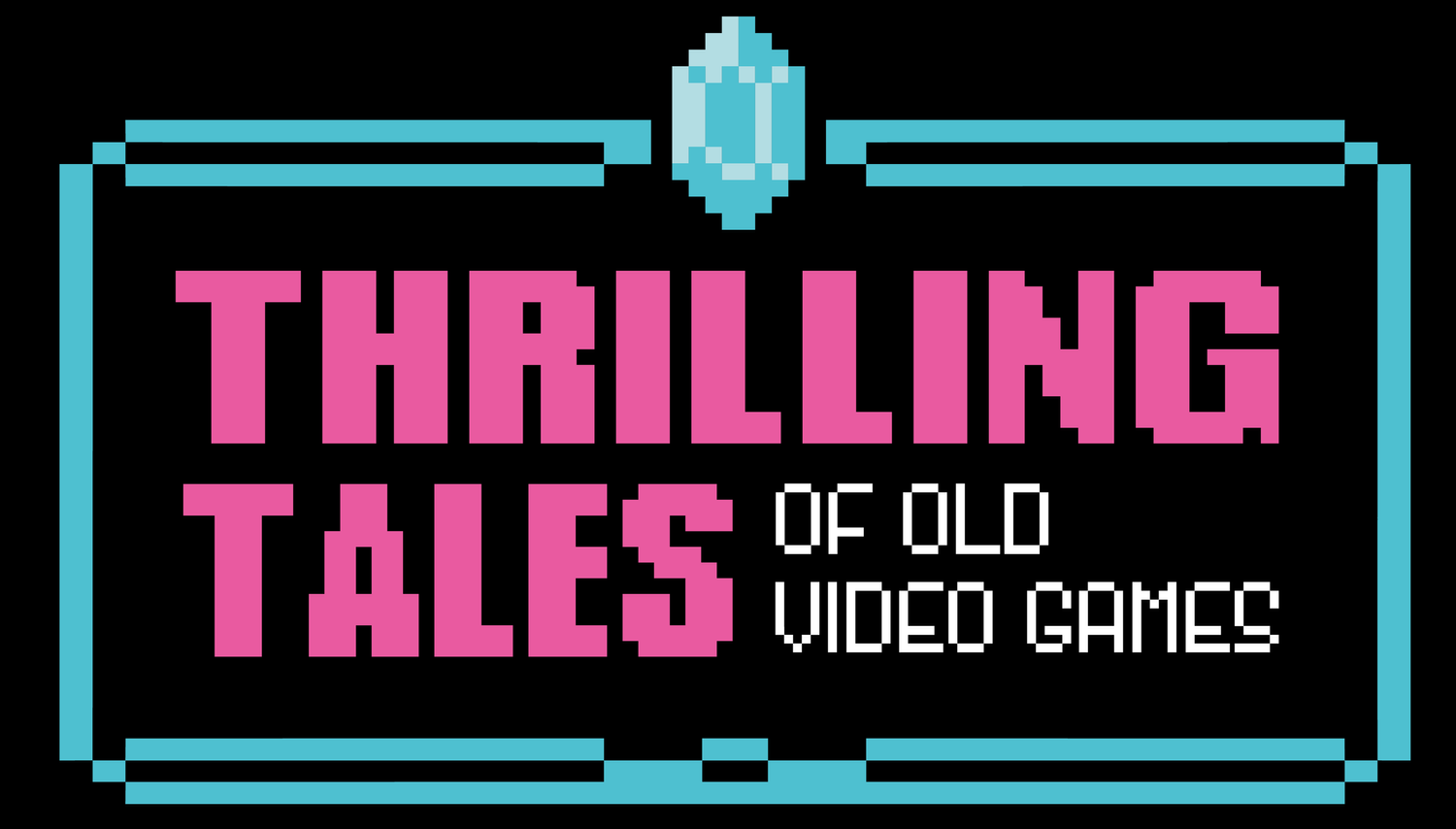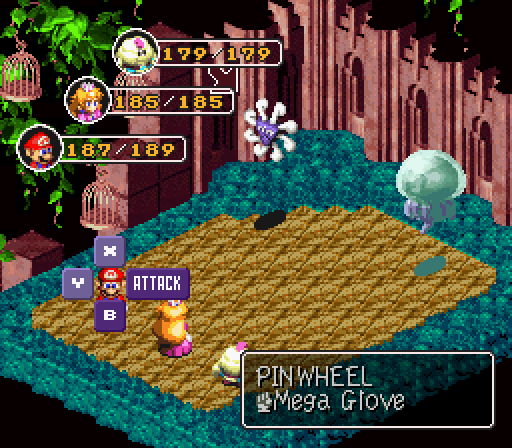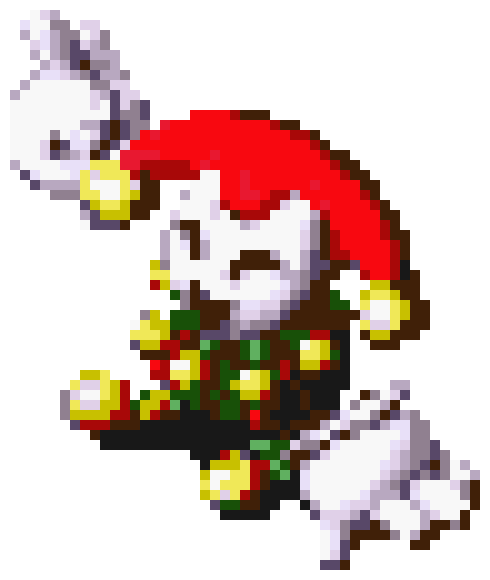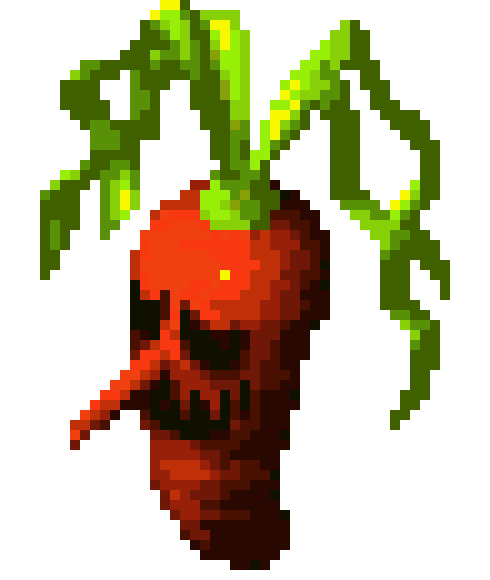Secrets of the Super Mario RPG Shaman
Count me among the people feeling both excited and surprised that Nintendo is remaking Super Mario RPG, because doing so means the return of many elements introduced in this title that have never appeared in subsequent Mario games. That said, there’s one specific, easy-to-overlook way that Super Mario RPG that has continued into the Paper Mario games, at the very least: the Shaman, an otherwise unremarkable generic enemy character.
As a lifelong Nintendo loyalist whose first RPG was the NES Final Fantasy, I felt like this 1996 team up between Nintendo and Square was like a major video game milestone. I’m not alone; Super Mario RPG has its share of fans, but many of the characters created specifically for this game never showed up again, presumably because they are owned by Square (now Square-Enix). Geno and Mallow never showed up in a Mario Kart game, for example, and subsequent Mario adventures in the RPG style were not developed by Square and introduced their own characters. Nintendo, it seemed, had moved on without Super Mario RPG, and this partnership apparently being a one-time thing, Square seemed uninterested in the elements associated with the game.
That’s not to say that Super Mario RPG just vanished, however. In 2000, Nintendo released Paper Mario, a new RPG that in the earliest stages was Super Mario RPG 2. Produced wholly in-house by Intelligent Systems, otherwise known for Nintendo-exclusive franchises such as Fire Emblem and Advance Wars, this game distinguishes itself from Super Mario RPG with a drastically different visual style. However, several of Paper Mario’s play mechanics echo ones introduced in Super Mario RPG. One of the biggest is the presence of timed hits in battles, which most turn-based RPGs don’t have. Basically, pressing buttons at precise moments can make your characters hit harder or block an enemy attack.
A properly executed timed hit means Mario gets a second punch in Super Mario RPG. (Via Super Mario Wiki.)
And Mario’s partner pulls off a similar trick in Paper Mario. (Via Schmuplations.)
And that’s not all. Whereas most RPG characters have their own magic points they can use for special attacks, both Super Mario RPG and Paper Mario assign those points to the entire party, so all characters are drawing from the same pool of resources. Finally, both games have Mario collecting seven special stars in the way that so many RPGs back in the day tasked you with collecting a certain number of prized whatchamacallits — crystals, orbs, Mana Seeds, magic keys, precious chocolate figurines, what have you. So yeah, storybook drag notwithstanding, Paper Mario still owes a certain debt to Super Mario RPG.
The enemy characters created for Super Mario RPG did not return, however. They have a unique look to them that you won’t see in any other Mario game. Here, take a look at these weirdos.
Left to right: Hobgoblin, Jester and Carroboscis — all generic Super Mario RPG enemies (and all gifs via Super Mario WIki).
When Nintendo followed up with Paper Mario, nearly every enemy in the game was based on an existing, known Mario character introduced in a previous, non-RPG Mario game. The intention seems clear: Paper Mario looks unmistakably like a Mario game, whereas if someone where shown the generic baddies from Super Mario RPG, they might not be able guess what series they came from.
The one exception to the mass culling of Super Mario RPG characters is the Shaman, a wizard-looking dude that shows up in certain areas of the game as a shopkeeper and other areas as a foe you fight in battle. Their special attacks use magic spells, and I’m guessing their look is to Square riffing on their iconic spellcasters from the Final Fantasy games: Their blue robes and glowing eyes peering out from a shadowed face recall the Black Mage, while the cloak covering their heads recalls the White Mage.
Weirdly, these characters return, in a sense, in Paper Mario. Early in the game, Mario meets Merlon, a robed wizard who looks essentially like the Super Mario RPG Shaman but with a white mustache. He acts as the game’s internal customer support, and if at any point you’re stuck about where to go, he can offer you some general advice to get you to the next point in the story. What’s more, he’s just one member of an extended family of lookalike relatives who offer other forms of information, advice or magical insight: Merlee, Merluvlee, Merlow, Merle, and Merlar. Each of them also look like the Super Mario RPG Shaman with some added flair to distinguish them from each other.
Clockwise from top-left: Merlon, Merluvlee, Merlee, Merlar, Merle and Merlow.
Many of these characters exist in later games as well, and each subsequent appearance gets them a more stylized look that takes them slightly further from the Super Mario RPG base model.
Merlon, extra stylized, as he appears in Super Paper Mario.
You might look at these characters and wonder if the similarity is just a coincidence; Merlon and his kin look like the generic Shaman character because all of them are designed in a way that makes them look like stock wizards from some kind of fantasy setting. You’re not wrong, but I think the callback is, in fact, intentional, and you can see the evidence in the characters’ Japanese names.
In Japan, the Shaman is スペール, Supēru, with that name most likely being a play on the word spell, looking like a wizard and having magic attacks and all. In the Japanese version of Paper Mario games, Merlon’s family all have names that seem to reference this pun. Merlon is デアール, Deāru, which the Super Mario Wiki conjectures is a play on である, de aru, a “more formal variation” of だ, da, meaning “to be.” Merlee, who is first encountered in the desert area of Dry Dry Outpost, is known in Japan as サンデール, Sandēru, with the first syllable coming from either sun or sand. Merluvlee, a fortune teller and master of the mystic arts, is ミステール, Misutēru, the base word being mystery. Merlow, who collects star pieces, is known in Japan as アツメール, Atsumēru, from atsumeru, “to collect.” Merle, who lives in Starborn Valley, is スタール, Sutāru, a play on star. And finally Merlar is クリスタール, Kurisutāru, referencing the fact that she’s encountered in the Crystal Palace.
I can’t think of a reason why each of these characters would have a name that seems patterned after the Super Mario RPG character’s Japanese name except to link them back to this character, if only subtly. (Meanwhile, in the English version Merlon presumably gets his name from the character from Arthurian folklore, but the localization retains the idea of them having similar names by basing everyone else’s name off that.) And I don’t know why, of all the characters, the Shaman would be the one original bad guy that gets to return in some from in later games, but I can only guess that someone developing Paper Mario wanted to preserve this game’s status as the follow-up to Super Mario RPG, even if that connection was only spiritual by the time it finally hit shelves.
Merlon’s family stopped appearing in the Paper Mario games after Super Paper Mario, but then again Sticker Star, Color Splash and The Origami King each did away with a lot of the elements that Paper Mario and The Thousand-Year Door introduced to the series, thereby moving the gameplay further from what was established in Super Mario RPG. So in a way, that makes sense: as the influence of the original game wanes, the last remnants of it, the Shaman characters, go away too.
It remains to be seen if Nintendo ever gives Paper Mario the glossy remake treatment, but for now, at least, I’ll be happy seeing how they fare with the new and potentially improved version of Super Mario RPG.
Miscellaneous Notes
Somehow, in 2006, Nintendo released an official Super Mario Bros. book, Nintendo Heroes: Mario and the Incredible Rescue, that includes such locations as Kero Sewers, Tadpole Pond, the Forest Maze, and Moleville, all of which are unique to Super Mario RPG. Wario also shows up, however, and stickers that come with the book show art from Super Mario 64 and the Mario Party games. There’s even a Bob-Omb sticker that has never been seen in any other Mario media. It’s quite mysterious in general, but especially because the book includes settings invented for Super Mario RPG and theoretically owned by Square-Enix.
I like to pride myself on spotting connections between video games that other people don’t notice, so I have to admit that I was very jealous that Supper Mario Broth posted this connection between Culex, the pseudo-Final Fantasy boss hidden in Super Mario RPG, and Golbez, the Final Fantasy IV character. Essentially, the former is a reference to the latter, but you’d have to know both etymology *and* entomology to figure that out.
I already wrote about the theory that Golbez’s name comes from the Galubaeser Fly, an unpleasant, mosquito-like insect associated with the story of St. George and the Dragon, and I knew that Culex was a genus of mosquito, yet I never put it together that this was a likely explanation for the Super Mario RPG character’s name. Supper Mario Broth beat me to it. Dammit.
At the very least, I’m happy to be the one to put together that Valentina probably exists as a reference to the music of Jimmy Buffet, parrot-head and all. And I was gratified to hear that the specific parrot she’s wearing was, in fact, a nod to Squawks from the Donkey Kong Country games — and that they fixed her cocktail for the remake.
Given that Fire Flowers are a power-up that gives Mario magic powers — that is, throwing fireballs — it makes sense that the system for measuring your capacity for special moves in Super Mario RPG and Paper Mario would be Flower Points. Although the Mario & Luigi series of RPGs continues the tradition of timed button inputs increasing your success in battle, it does away with the shared Flower Points system in favor of Bros. Points, which are not shared. Regarding the Flower Points, there actually might be an additional holdover from Super Mario RPG to Paper Mario in the existence of Honey Syrup and Maple Syrup in both games as items that restore Flower Points.
There is exactly one enemy in Paper Mario that does not seem to be based on any existing Mario enemy: Bzzap!, the generic bee enemy, known in Japan as ハッチー or Hacchī. Other bee enemies exist in other Mario games, but none that look like or are named like this one. I have no idea where it came from. Do you?
Does the remake of Super Mario RPG mean characters like Geno and Mallow will get a chance to appear in more games? Well, it’s possible. However, Geno only appeared in the fourth Smash Bros. game as a Mii Fighter outfit when Cloud from Final Fantasy VII joined the roster, the implication being that he’s part of a package deal because Square-Enix owns both characters. And his previous cameo, in a mini-game in Mario & Luigi: Superstar Saga, came along with a clause in the credits specifying that Square-Enix owns the copyright.
So the fact that Nintendo would need Square-Enix’s approval to, say, get him in some Mario spinoff title makes it all seem less likely, but then again I never expected that Super Mario RPG would see the light again, much less a full remake. I’m curious to see what happens.












